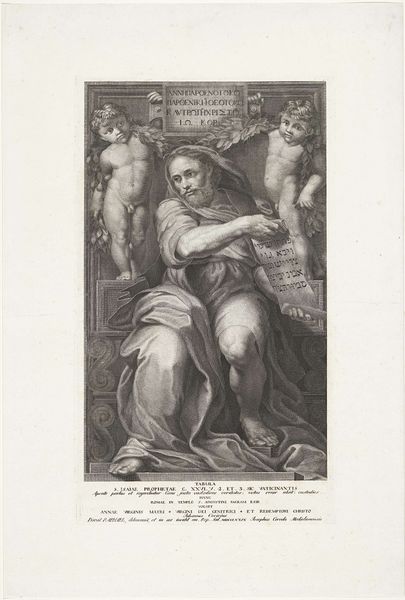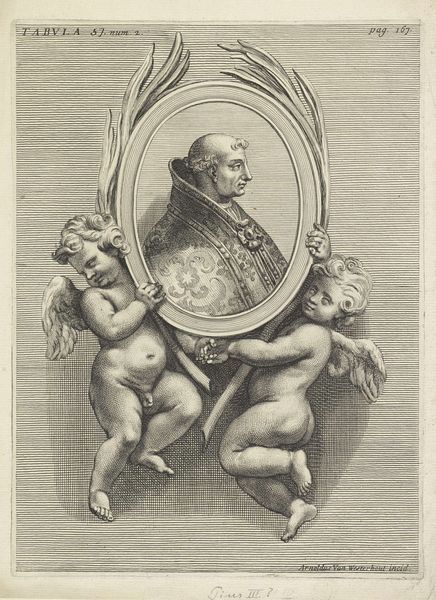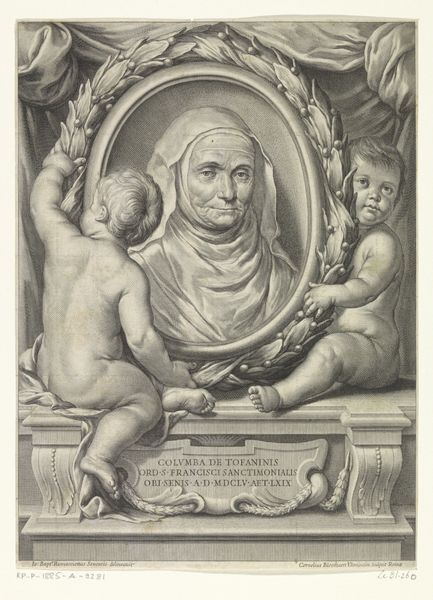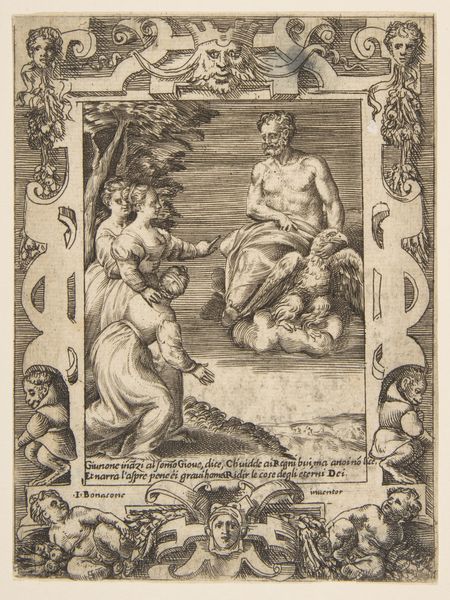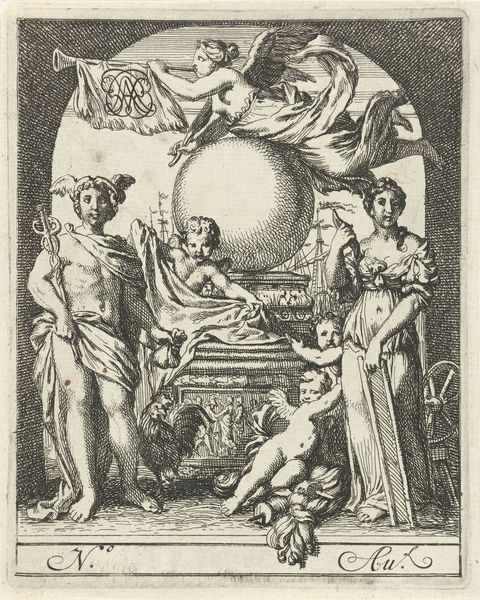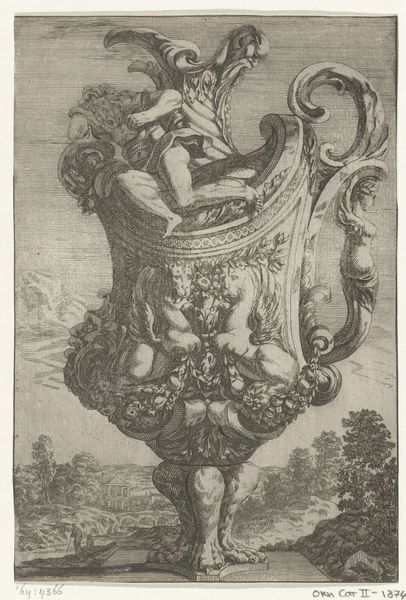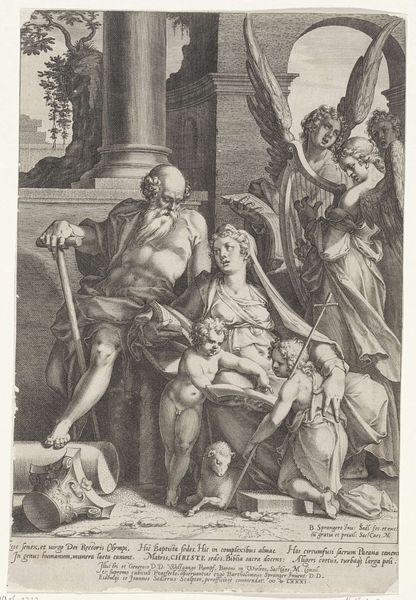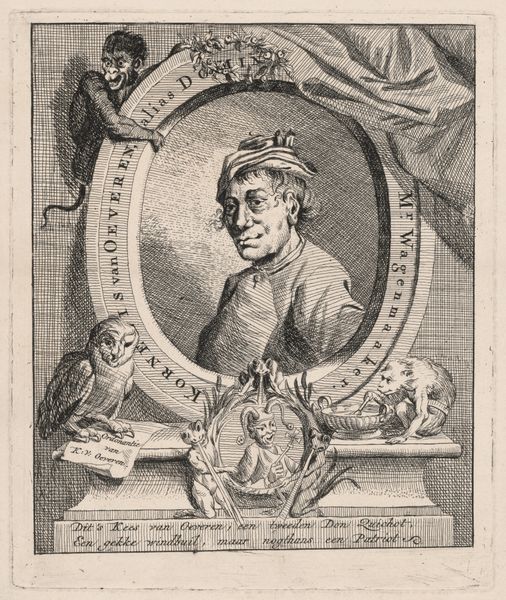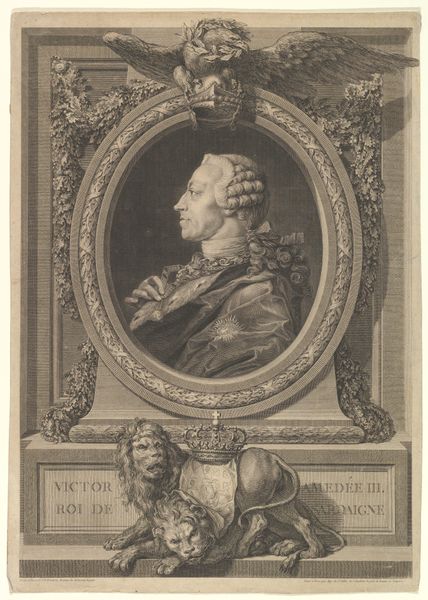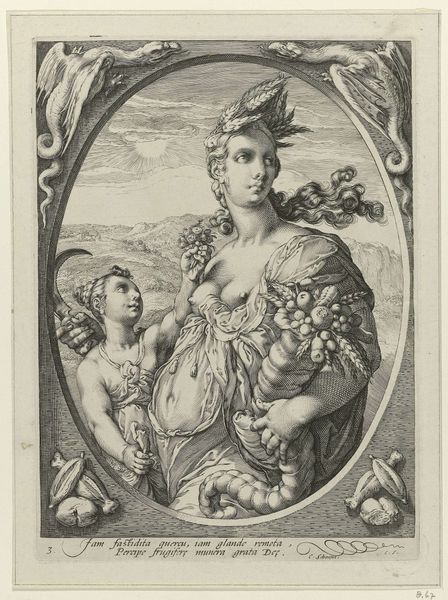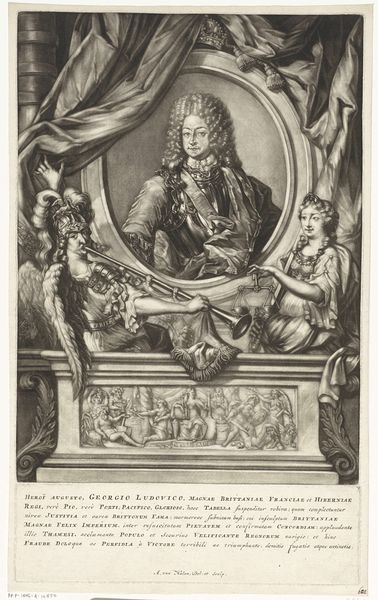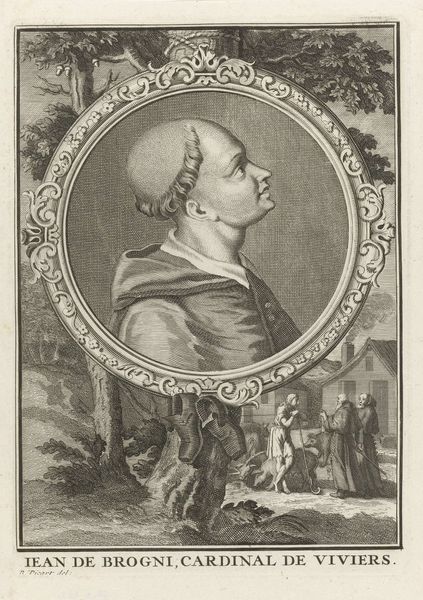
drawing, engraving
#
portrait
#
drawing
#
baroque
#
caricature
#
classical-realism
#
ancient-mediterranean
#
portrait drawing
#
history-painting
#
engraving
Dimensions: height 242 mm, width 190 mm
Copyright: Rijks Museum: Open Domain
Editor: Here we have a drawing from between 1740 and 1774 entitled "Buste van Julius Caesar," by Pieter Anthony Wakkerdak. It's a portrait, classical in style, done as an engraving, and what strikes me is the contrast between the powerful Caesar and the playful cherub. How do you interpret this work? Curator: It's fascinating how Wakkerdak engages with the loaded figure of Caesar. We have to consider the legacy of Roman leaders and their continuous reimagining, particularly regarding ideas of power and authority. Do you think the artist elevates or satirizes Caesar's image? Editor: That's a great question! The cherub does suggest a bit of playfulness, but overall, it feels quite formal and stately. Curator: Exactly, the presence of a cherub adds a layer of commentary, questioning the unyielding nature of power and tradition. Also, notice the choice of engraving: what political and cultural power did it represent? Editor: Well, it's a more accessible medium than sculpture, allowing for wider dissemination of the image, which potentially democratizes the Roman leader's representation. Curator: Precisely! And, consider the implications of circulating images of powerful figures within the political context of Wakkerdak's time. What narratives might such accessibility have challenged? Editor: I hadn't thought of it that way! Seeing it as part of a larger discourse on power really changes my perspective. Curator: These images, however ‘classical,’ inevitably reflect contemporary societal tensions and act as silent, yet potent, voices in ongoing conversations about leadership, representation, and historical memory. They offer a means through which to both question and reconstruct the world. Editor: Thank you. It makes me realize how important it is to consider the historical context of the artwork, beyond just its visual appearance.
Comments
No comments
Be the first to comment and join the conversation on the ultimate creative platform.
